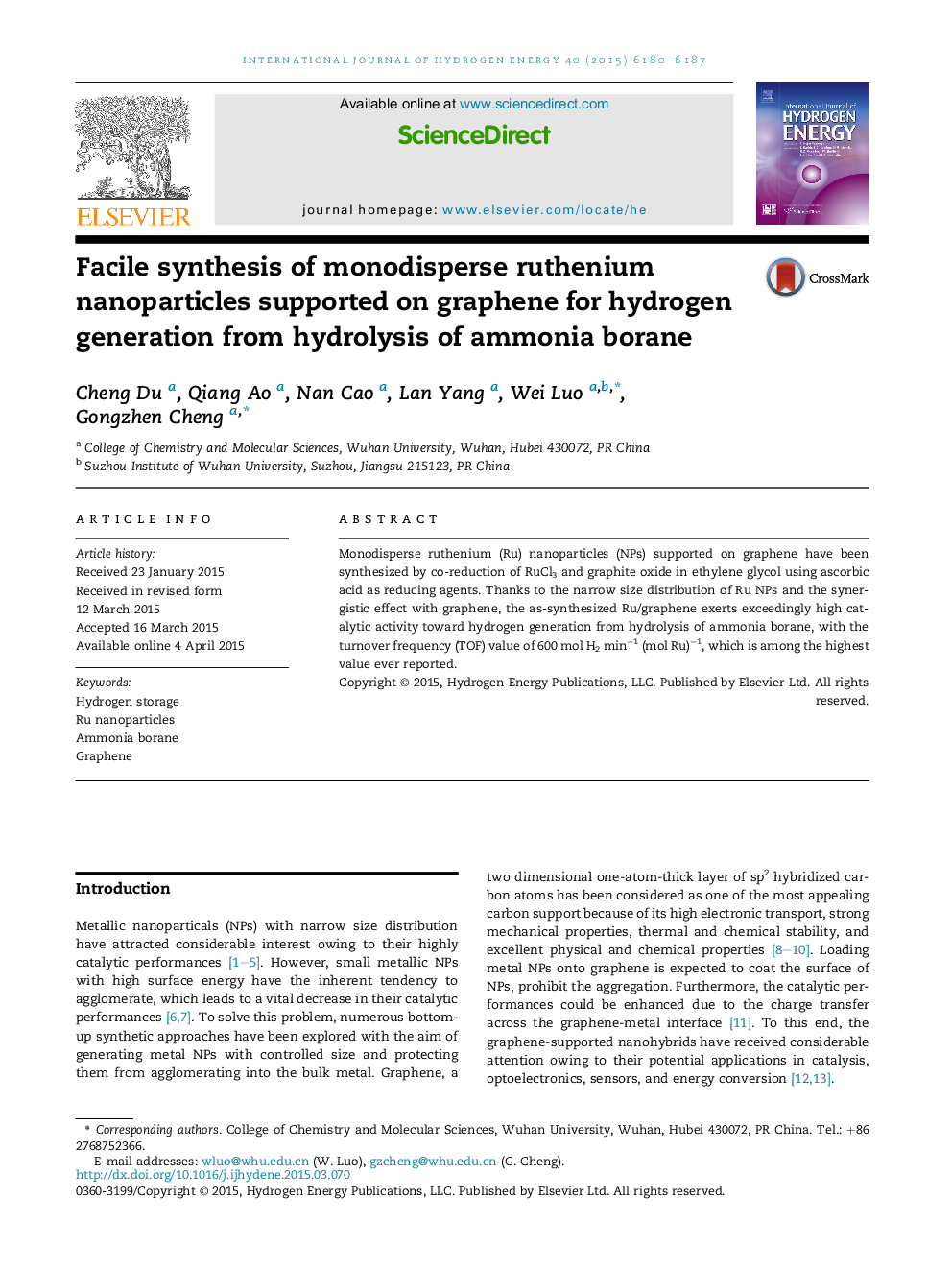| Article ID | Journal | Published Year | Pages | File Type |
|---|---|---|---|---|
| 7715651 | International Journal of Hydrogen Energy | 2015 | 8 Pages |
Abstract
Monodisperse ruthenium (Ru) nanoparticles (NPs) supported on graphene have been synthesized by co-reduction of RuCl3 and graphite oxide in ethylene glycol using ascorbic acid as reducing agents. Thanks to the narrow size distribution of Ru NPs and the synergistic effect with graphene, the as-synthesized Ru/graphene exerts exceedingly high catalytic activity toward hydrogen generation from hydrolysis of ammonia borane, with the turnover frequency (TOF) value of 600Â mol H2Â minâ1 (mol Ru)â1, which is among the highest value ever reported.
Related Topics
Physical Sciences and Engineering
Chemistry
Electrochemistry
Authors
Cheng Du, Qiang Ao, Nan Cao, Lan Yang, Wei Luo, Gongzhen Cheng,
